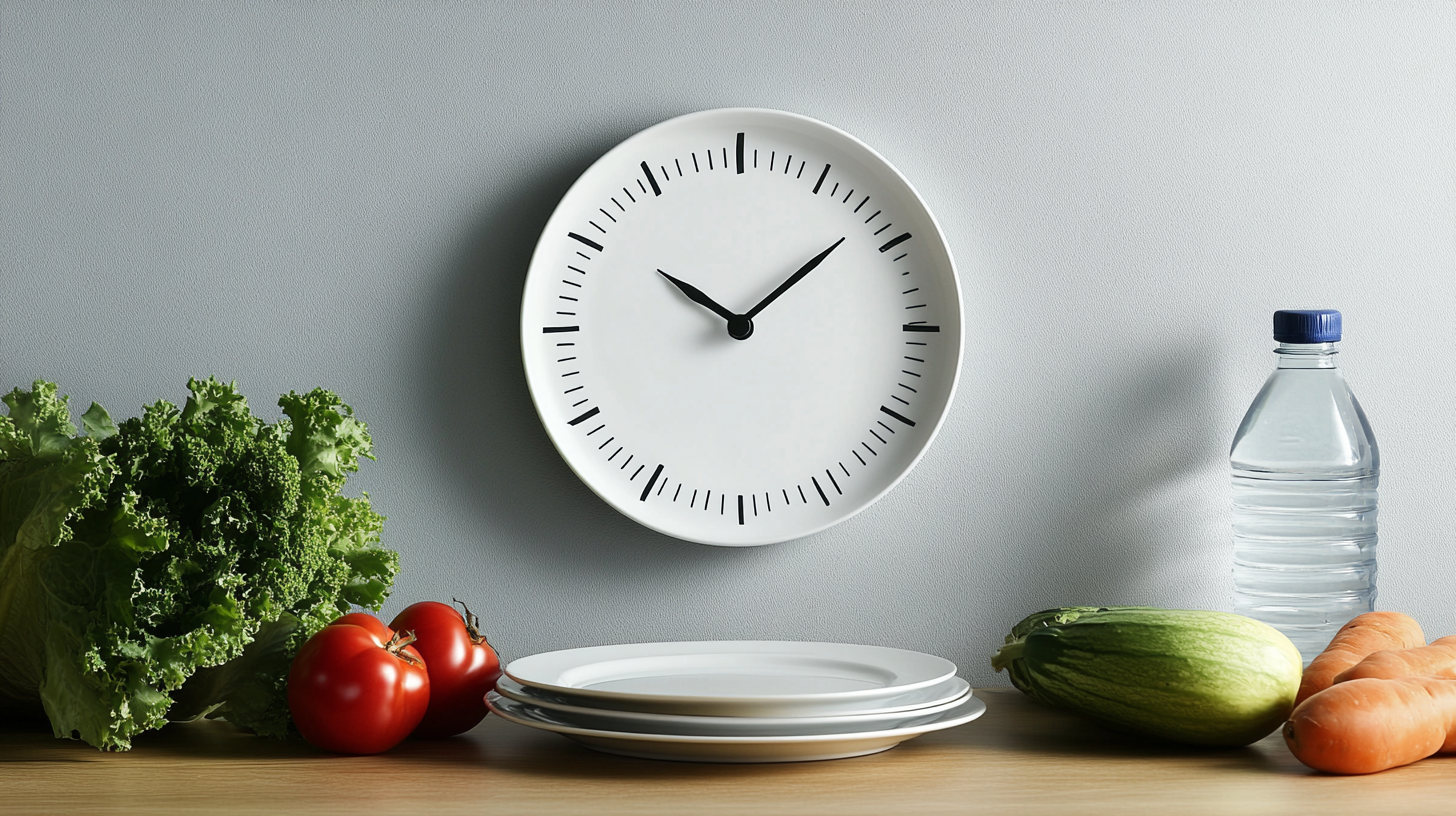
Welcome to the SympathiQ Diet & Weight Loss Blog, your comprehensive source for nutrition guidance, proven strategies and empowering success stories. Whether you’re just starting, experiencing a plateau, or looking to refine your approach, our guide is crafted to support your unique health journey. Expect a blend of research-backed tips, community insights, and practical recipes that make healthy living more enjoyable (and, yes, tasty!). Let’s dig in.
(Feel free to skim sections that resonate most or read through for an in-depth diet and weight loss exploration!)

A balanced diet and healthy body composition do more than transform your silhouette. They impact:
Energy Levels: Fueling your body with nutrient-dense foods can boost productivity, stamina, and overall vitality.
Mood & Mental Health: Certain diets—especially those rich in whole foods—are linked to better emotional balance and reduced stress.
Longevity & Disease Prevention: Studies link balanced nutrition to lower risks of chronic ailments like diabetes, heart disease, and some cancers.
Reaching or maintaining a comfortable weight can significantly enhance self-esteem. Feeling good in your skin ripples into your relationships, career, and day-to-day enjoyment. This goes hand in hand with mindset coaching or life coaching methods focusing on personal growth and self-compassion.
At SympathiQ, we believe in blending mindful eating, practical strategies, and real-life adaptability. No crash diets or extreme fads—just evidence-based insights to help you develop a sustainable, fulfilling relationship with food.
Quick Inspiration: Strive for progress, not perfection. No matter how small, each healthier choice you make adds to significant changes over time.

A balanced diet typically includes:
Protein: Lean meats, eggs, dairy, legumes, or plant-based alternatives (tofu, lentils).
Carbs: Ideally, they should be from whole grains, fruits, and veggies, avoiding excess refined sugars.
Fats: Prioritize healthy fats from avocados, nuts, seeds, and olive oil.
Micronutrients: Vitamins and minerals found in colorful produce, seeds, nuts, and fortified foods.
Portion sizes have ballooned over the years. A practical approach includes:
Using Smaller Plates: Trick your brain into feeling satisfied with slightly less.
Mindful Eating: Slow down, savor each bite, and check for satiety signals (instead of waiting to feel stuffed).
Meal Pre-Measurement: For calorie control, measuring ingredients (or portioning them in containers) ensures you’re aligned with daily goals.
Sometimes, hunger is thirst in disguise. Drinking water consistently:
Boosts metabolism (slightly, but every bit counts)
Aids digestion and nutrient absorption
Minimizes between-meal snacking urges
Pro Tip: Carry a reusable water bottle. Aim for regular sips, particularly before meals, to help regulate your appetite.
Weight loss generally hinges on a calorie deficit—burning more calories than you consume. Tools like calorie calculators or tracking apps can clarify your daily needs. But remember:
Deficits Should Be Sustainable: Extreme cuts can trigger fatigue, muscle loss, or nutrient deficiencies.
Quality over Quantity: 2,000 calories from burgers and candy drastically differ from 2,000 calories from balanced proteins, grains, and veggies.
Protein: Crucial for muscle maintenance, especially during weight loss, to preserve lean mass. Aim for about 0.8–1.2 grams of protein per pound of body weight (or about 1.6–2.2g/kg), depending on activity level.
Carbs: Fuel your brain and workouts. Complex carbs (oats, quinoa, sweet potatoes) release energy steadily, while simple carbs (processed sugar, white bread) can spike cravings.
Fats: Provide satiety and hormone regulation. Focus on unsaturated forms (olive oil, fatty fish, nuts).
There’s no universal “perfect” ratio. Some thrive on slightly higher protein, others on moderate carbs. Experiment to find a sweet spot that keeps you energized without hunger pangs. A dietitian or health coach can offer more specific guidance based on goals, activity, and metabolism.
Mindful Eating Exercise: Before each meal, pause for 10 seconds to label your hunger level (1=not hungry, 10=starving). This exercise fosters intuitive awareness and helps you gauge portion sizes more effectively.
IF involves cycling between eating and fasting windows (e.g., 16 hours fasting, 8 hours eating). Potential benefits include:
Simplified meal planning (fewer meals)
Possible improved insulin sensitivity
Encourages the body to tap fat stores during fasting
However, it may not suit everyone—particularly individuals prone to stress management issues or those with a history of disordered eating. Evaluate personal comfort and lifestyle before trying.

Keto severely limits carbs, pushing your body into ketosis (using fat for fuel). Some experience faster weight loss or better appetite control. Downsides include:
“Keto flu” during adaptation
Difficulty sustaining carb limits long-term
Potential concerns with high saturated fat intake
Plant-centric diets emphasize vegetables, fruits, legumes, and whole grains, often linked to heart health and environmental benefits. For weight loss:
Focus on protein sources: beans, lentils, tofu, tempeh, and seitan.
Plan carefully to avoid nutritional gaps (e.g., vitamin B12, iron, or calcium).
Emphasize whole foods over ultra-processed vegan products.
These revolve around a moderate fish intake, poultry, whole grains, olive oil, and plenty of produce. The variety fosters compliance, often resulting in improved cardiovascular markers and gradual, steady weight management.
Personalization Note: Each approach has pros and cons. The best “diet” is one you can enjoy and sustain. Explore, adapt, and remain flexible as your body’s needs evolve.
When you meal prep ahead, it’s easier to dodge spur-of-the-moment fast-food runs or random snacking. Tips:
Weekly Grocery List: Outline lunches, dinners, and snacks, and buy only what’s needed.
Batch Cooking: Prepare large batches of protein (chicken, beans) and freeze portions for busier days.
Portion Control: Pre-pack lunches in portioned containers.
Breakfast: Overnight oats with Greek yogurt, berries, and chia seeds.
Lunch: Mixed green salad with grilled chicken, avocado slices, and balsamic drizzle.
Snack: Hummus with carrot sticks or a piece of fruit.
Dinner: Salmon fillet with roasted broccoli and quinoa seasoned with herbs.
Contrary to some misconceptions, nutritious meals needn’t be expensive:
Bulk Buys: Rice, beans, oats—cost-effective staples that store well.
Seasonal & Local Produce: Often cheaper and fresher.
Reduced Waste: To minimize spoilage, freeze or repurpose leftovers in soups or stir-fries.
Quick Cooking Hack: Having a repertoire of 3–5 straightforward, 20-minute recipes ensures you can whip up a healthy meal even on hectic days—no reliance on takeout.

It is common to reach for sugary or comfort foods when stressed, bored, or upset. While the occasional treat is fine, consistent emotional eating can sabotage weight management.
Identify Triggers: Work stress? Relationship conflicts? Fatigue?
Alternative Coping: Take a brief walk, meditate, or journal.
Mindful Substitution: If you crave a crunchy snack, opt for carrots with hummus instead of a bag of chips.
If you slip up (e.g., binge on pizza after a rough day), practice self-compassion. Ask yourself: What did I learn? How can I better handle stress next time? This perspective transforms setbacks into stepping stones.
Techniques like breathing exercises, morning yoga routines, or short mindfulness sessions can lower cortisol—reducing stress-induced sugar cravings. Combining these with consistent life coach or mindset coaching support fosters emotional resilience and balanced eating habits.
Reflective Prompt: Write down three non-food stress busters (such as listening to a fun playlist, doing quick office stretches, or calling a supportive friend) and try them before reaching for snacks.
Exercise enhances weight loss by burning extra calories, preserving muscle mass, and boosting metabolism. It also improves mood, making it easier to stick to dietary goals. Thus, a synergy emerges: better fitness fosters better food choices, and vice versa.
Cardio: Running, brisk walking, cycling, or dance workouts. Great for heart health and calorie burn.
Strength Training involves weightlifting and bodyweight exercises (such as push-ups and squats). It builds muscle, which can raise the resting metabolic rate.
Flexibility & Recovery: Integrating yoga for stress relief or stretching sessions keeps joints healthy.
If the gym bores you, explore:
Online fitness classes (dance cardio, HIIT, yoga).
Outdoor pursuits (hikes, group sports).
Functional workouts (walking the dog, gardening, or active chores).
Sustainability Hint: The best workout is one you enjoy consistently, whether dancing, jogging, or using home-based resistance bands. Pair it with a supportive eating plan for holistic gains.
Struggle: Overeating fast food and skipping breakfast.
Approach: With the help of a Sunday meal prep life coach, John introduced meal prep on Sundays, replaced sodas with sparkling water, and added short daily walks.
Outcome: In 8 months, I lost 50lbs, improved energy, and found a new passion for cooking.
Takeaway: Small daily actions, like removing soda from your routine, can snowball into significant changes.
Struggle: Constant cravings, sugar highs, and crashes.
Approach: Transitioned to a keto diet, focusing on moderate protein, healthy fats (avocados, nuts), and plenty of greens, and maintained a calorie deficit overall.
Outcome: Dropped 20lbs in 4 months, stabilized energy levels, overcame sugar dependency.
Takeaway: A specialized diet (like keto) can help reset habits, but success also hinges on nutrient-dense choices and portion awareness.
Struggle: Grazing on snacks all day, no meal structure.
Approach: Adopted a 16:8 IF window—fasted from 8 pm to noon the next day. Focused on balanced lunches, dinners, and mindful portion sizes.
Outcome: Lost 15lbs in 3 months, improved concentration, found it flexible for her busy schedule.
Takeaway: Intermittent Fasting can simplify daily eating, but it’s crucial to maintain nutrient quality in the “feeding window.”
Your Story Here: Everyone’s journey is unique. Share your progress on SympathiQ’s forums to inspire others and celebrate each milestone.
Weight might drop quickly initially. Over time, your body can adapt, burning fewer calories as you lose weight or restrict too drastically. This stall is standard and not a sign of failure.
Reevaluate Calorie/Portion: You may need minor adjustments—like reducing daily intake by 100–200 calories or adding an extra 10-minute daily walk.
Boost Strength Training: Preserving (or building) muscle helps keep your metabolism higher.
Cycle Your Intensity: Alternate between moderate and higher-calorie days or vary your workouts (e.g., add HIIT).
Check Stress & Sleep: Chronic or insufficient sleep can stall progress by affecting hormones like cortisol or ghrelin.
Sometimes, the real barrier is mental burnout. If you’re feeling diet fatigue:
Take a Maintenance Break: Slightly increase calories to maintenance for a week or two.
Shift Focus: Aim for performance-based goals (like improving push-ups or running a mile faster) instead of the scale.
Remember Non-Scale Wins: More energy, better digestion, looser clothes, improved confidence.
Coach’s Reminder: Weight plateaus can be stepping stones. Embrace them as your body’s recalibration period. Patience, minor tweaks, and consistent focus typically reignite progress.
Logging meals can highlight unintentional overeating or nutritional gaps. User-friendly apps like MyFitnessPal, Cronometer, or Lose It! are also helpful. However, remember to stay flexible and avoid obsessiveness or harsh self-judgment.
Smartwatches or step counters gauge daily movement. Some people find it motivating to hit step goals or ensure consistent activity. Still, these aren’t mandatory. An old-fashioned notebook or simple mental tallies can suffice if gadgets stress you out.
Sharing your struggles, recipes, or milestone updates with a supportive group fosters accountability. SympathiQ’s forums, for instance, let members exchange tips on healthy eating, meal planning, stress management, or mindful movement. Weekly or monthly challenges (like a “30-day sugar detox” or “plank challenge”) keep things engaging.
Buddy System: Team up with a friend, partner, or coworker. Cheer each other on, swap meal ideas, or schedule group workouts for an added layer of fun and commitment.
Prep: Whisk eggs with chopped spinach, onions, bell peppers.
Add A sprinkle of cheese or turkey bacon bits (optional).
Bake: In a muffin tray at 350°F (175°C) for ~15-20 minutes.
Benefits: Protein-packed, easy to grab on busy mornings, portion-controlled.
Base: Quinoa or brown rice.
Protein: Roasted salmon fillet (season with lemon herbs).
Veggies: Spinach leaves, cherry tomatoes, cucumber slices.
Topping: Avocado chunks + drizzle of olive oil & vinegar.
Nutritional Perk: Omega-3s from salmon, fiber from grains and veggies.
Zoodles: Spiralize zucchini or buy pre-spiraled. Lightly sauté with olive oil.
Meatballs: Lean ground turkey, breadcrumbs (whole wheat), egg, spices. Bake or pan-fry.
Sauce: Low-sugar marinara.
Highlights: Lower carb than traditional pasta, high protein, sneaky veggie intake.
Layer: Unsweetened Greek yogurt, fresh berries, a drizzle of honey, and a sprinkle of granola or chopped nuts.
Optional: Seeds (chia, flax) for extra omega-3.
Why It’s Great: Balanced macros, delicious dessert-like taste without heavy guilt.
Recipe Tip: Keep experimentation alive by swapping ingredients to suit personal tastes, cultural preferences, or dietary restrictions. The journey is more fun when flavor and creativity shine.
Maintaining your diet plan away from home can be tricky. Strategies:
Research Menus: Pick restaurants offering healthier options.
Portion Strategy: Split large meals with a friend or pack half to go.
Snack Preparedness: Carry protein bars or fruit for flights or road trips.
Deprivation often leads to binges. Scheduling mindful treat meals can prevent a total meltdown. Savor a slice of pizza or cake occasionally, but remember to control your portion size.
Rigid rules sometimes spark a rebellion. If 80% of your choices are aligned with your healthy eating plan, the remaining 20% can be moderate indulgences. This balanced mindset fosters a more relaxed, joyful approach to lifestyle change.
Positive Outlook: After consistent healthy habits take root, many “old cravings” lose their hold. Over time, your palate adapts, and nutrient-dense foods become more satisfying.
Chronic sleep deprivation disrupts hunger hormones (ghrelin and leptin), fueling cravings and undermining weight control. Aim for 7–9 hours nightly to:
Stabilize energy
Improve metabolism
Enhance mood and willpower
Elevated cortisol from prolonged stress can stall weight loss, prompting the body to store fat (particularly in the abdominal area). Combat it with:
Meditation or mindfulness (especially short sessions of guided relaxation)
Regular physical activity (yoga, walking)
Time management to reduce overwhelm
Factors like menopause, PCOS, or thyroid issues can affect weight dynamics. If you suspect hormonal imbalances, consult medical professionals for guidance. A life coach or dietitian can tailor nutrition strategies respecting these nuances.
SympathiQ Holistic Insight: A genuinely successful diet plan addresses more than calories—it embraces emotional well-being, stress management, and adequate rest.
If you have specific health conditions, such as diabetes, kidney issues, or severe food intolerances, expert support ensures your diet is effective and safe. They can provide meal plans and nutrient breakdowns and methodically track progress.
Sometimes, overeating or yo-yo dieting masks deeper issues (anxiety, depression, trauma). Therapy or counseling may be vital in tandem with dietary changes. This integrative approach addresses root causes.
Struggling with consistency or motivation? A life coach near me can create a roadmap, monitor weekly goals, and help you troubleshoot setbacks. Some coaches even integrate body positivity or self-care principles, ensuring healthy weight loss from a place of self-love rather than shame.
Encouragement: Asking for professional guidance isn’t a weakness—it’s a proactive step toward success. Lean on a trusted circle of experts and supportive peers.
Not all carbs are created equal. Whole grains, fruits, and beans are nutrient-rich and beneficial. Its refined carbs (sugary snacks, white bread) can spike blood sugar and hamper progress if overconsumed.
Healthy fats (avocado, nuts, olive oil) support nutrient absorption, hormone function, and satiety. The key is moderation and focusing on unsaturated varieties.
Crash diets may yield quick results but rarely last. Most revert to old habits, regaining lost weight. A balanced approach—a moderate calorie deficit and mindful choices—often fosters consistent, sustainable results.
Myth Busting: The diet industry thrives on sensational headlines. Always cross-check claims with reputable sources or discuss with a professional dietitian or nutrition expert.
After hitting your target weight or health milestone, shift the focus toward a maintenance phase. This involves:
Slightly raising calories to align with your new metabolic needs.
Continuing to track or regularly self-check portion sizes to avoid gradual regain.
Keeping physical activity consistent for muscle tone and metabolic benefits.
As you stabilize, fresh goals emerge. Maybe now you’re aiming for a personal best in a 5K run, exploring online yoga classes for flexibility, or training for a half-marathon. Evolving ambitions keep your journey stimulating.
Being at a comfortable weight doesn’t mean perpetual restriction. Embrace occasional indulgences with awareness—like tasting local desserts on vacation or enjoying special occasion meals. Maintaining your mindset and moderate habits helps keep you in equilibrium.
Sustainability Nugget: Weight management is a long-distance run, not a sprint. To thrive year after year, practice flexibility, self-monitoring, and continuous learning.
Weight loss or an improved diet go hand in hand with personal growth. Tools like time management or mindset coaching from SympathiQ amplify your successes. Upgrading your eating habits can unleash better mental clarity, emotional stability, and renewed self-confidence across all life domains.
Support systems—family, friends, or an online forum—fuel motivation, provide accountability and celebrate your wins. Sharing recipes, exchanging tips, or tackling group challenges fosters a sense of belonging and momentum.
No single “magic diet” suits everyone. Sometimes, you’ll adapt or pivot your approach based on changing preferences, new knowledge, or shifts in your daily routine. Embrace trial and error—learning what resonates with your body is part of the journey.
Final Thought: The end goal is not perfection but consistent improvement. Each mindful meal, supportive friend, and short walk or workout contributes to a vibrant, healthier you.

On our SympathiQ Diet & Weight Loss Blog, dive deeper into:
Specialized diet tips (keto, vegan, IF, etc.)
Expert-curated meal plans & shopping lists
Success stories from community members like you
Mindset topics: from emotional eating to healthy relationships with food
Are you struggling with a plateau or lack of direction? Our platform connects you to life coaches, nutrition experts, and online yoga instructors who can tailor advice to your schedule, preferences, and challenges.
Stay motivated through friendly, goal-oriented challenges—like a “30-day sugar cutback” or “meal prep mastery.” Engaging with fellow participants ignites camaraderie, accountability, and fresh motivation.
Progress Tracker: Log daily meals, highlight victories, and note stumbling blocks. The synergy of consistent tracking and supportive feedback fosters unstoppable momentum.
Embarking on (or refining) a weight loss or healthy eating path can feel daunting—but remember, you’re not alone. The steps you take, whether small or large, reflect a commitment to self-care, growth, and a brighter tomorrow.
Savor the Process: Enjoy discovering new flavors, trying creative recipes, and challenging your body gently.
Celebrate Non-Scale Wins: Notice improvements in stamina, mood, or how clothes fit—these are vital milestones.
Prioritize Well-Being Over Perfection: Occasional treats or “off” days are part of being human. What matters is your consistent effort and returning to balanced habits.
At SympathiQ, we champion a positive, sustainable approach that cherishes your unique body and preferences. Ready to dive deeper? Explore our library, connect with coaches, or share your triumphs on our community forum. Here’s to fuel yourself with intention, discovering new joys in food, and stepping into a healthier, happier you. Cheers! 🥑💪
Your email address will not be published. Required fields are marked *